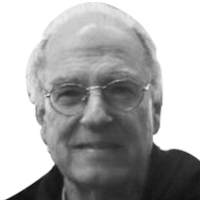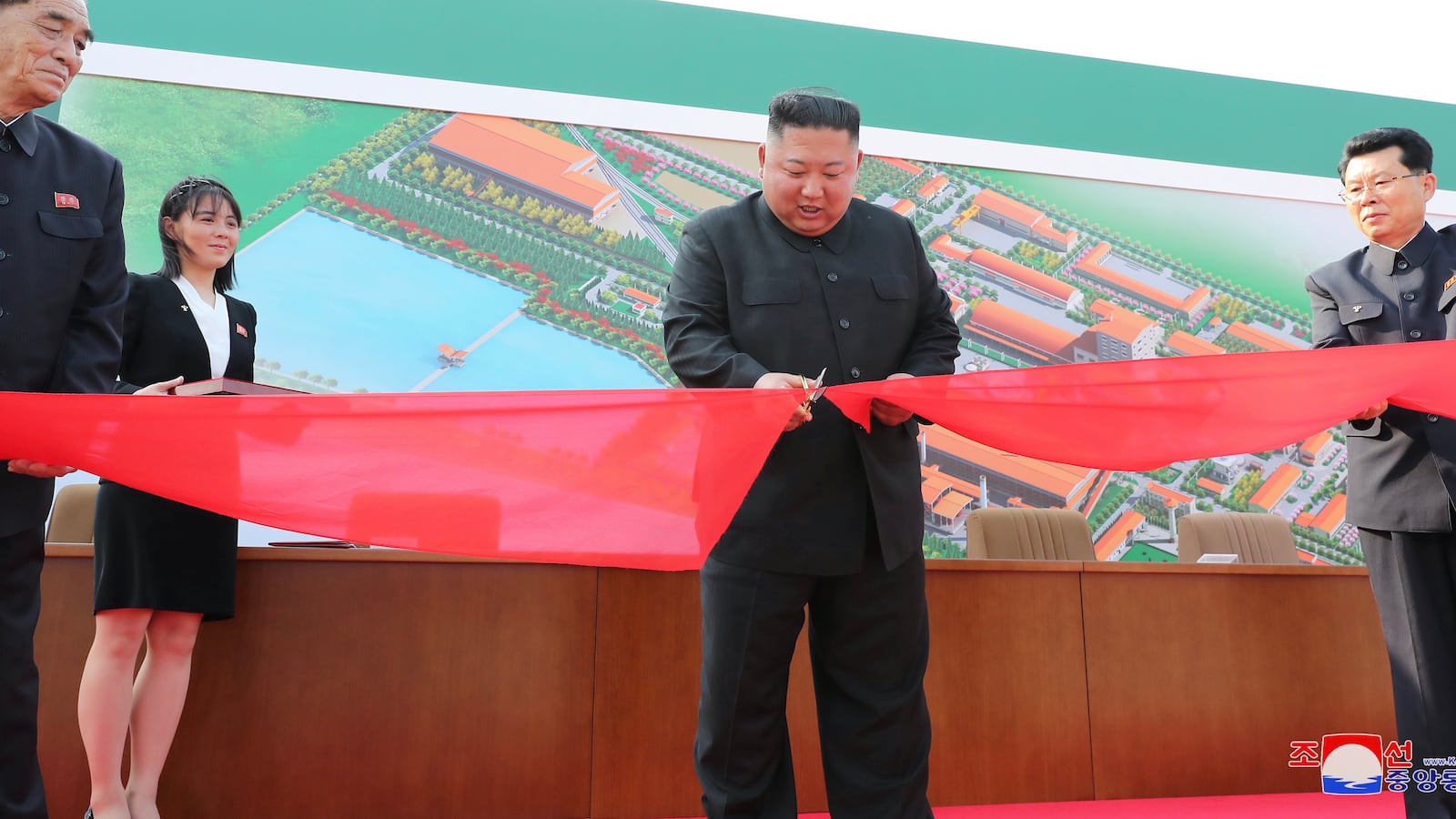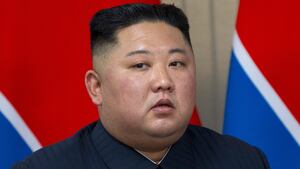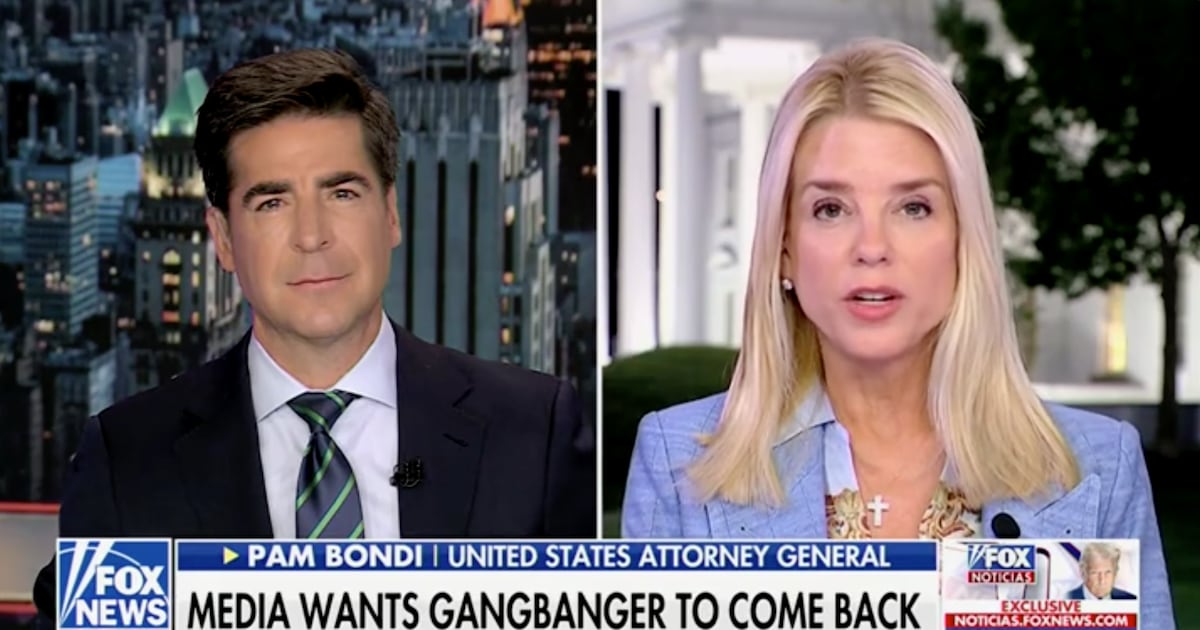This article was updated at 1:00 p.m. EDT, May 2, 2020.
SEOUL—Hold the obituaries. In official North Korean video and photos, Kim Jong Un appears not only alive and well but thoroughly enjoying himself in the company of his younger sister, Kim Yo Jong, and a lineup of high-ranking officials at a sprawling new industrial complex.
There, splashed across the front page of the party paper, Rodong Sinmun, are 21 colorful shots showing the Supreme Leader snipping a large crimson ribbon, crowds cheering, and Kim speaking from a long platform beneath the date, May Day 5/1, in large Korean lettering at the Sunchon Phosphatic Fertilizer Factory.
No, it’s nowhere near the compound in the east coast port city of Wonsan where he was rumored to have been hanging out, recovering from a heart operation or the coronavirus or just avoiding the dread disease. Sunchon is 30 miles north of Pyongyang, and it’s anybody’s guess where Kim’s been since his last previous appearance on April 11, when he addressed the political bureau of the Workers’ Party, calling for tougher measures to curb COVID-19.
Doubts persisted, though. Skeptics said they still had to wait for moving images of Kim to be sure of the validity of the still photographs.
They did not have to wait long. Several hours later, North Korean state TV broadcast a lengthy video report showing Kim at the factory walking by cheering well-wishers carrying flowers, and his sister Yo Jong formally handing him a box containing the scissors with which he cut the red tape before going on a walking tour in and around the new buildings. Judging from his waddling gait, however, Kim may have undergone a medical procedure that accounted for his prolonged absence.
“It’s all very suspicious,” said Thae Hong-ho, the former senior North Korean diplomat who defected in London nearly four years ago and was elected last month to South Korea’s national assembly.
Also grounds for lingering suspicion: neither Kim nor Yo Jong nor any of the toadies ranged on either side of them on the reviewing stand were wearing masks. Yes, all those well-wishers, waving as Kim strode confidently but unevenly by them, were properly masked. But massed closely together, cheering wildly as balloons floated above, they were oblivious to common sense about social distancing.
Leaving such nagging details aside, however, the immediate view from here is the photos are legit and Kim has again defied all the talking heads and experts and nay-sayers who thought for sure he was either dead or dying or in any case suffering any number of ailments that might besiege a hard-working, chain-smoking, cheese-loving, 5-foot 7-inch 300-pounder.
“I have no reason to believe the photos are fake,” said Dan Pinkston, who lectures on international relations at Troy University’s campus here and just published a lengthy analysis of the whole succession process in case Kim really wasn’t going to make it. “The most likely reasons [he dropped out of sight] are probably to avoid COVID-19, or he might have undergone some medical procedure.”
The gossip mill about Kim’s mysterious absence from public view really began to churn after an April 20 report in the Daily NK, a website staffed by North Korean defectors here that often carries intriguing reports from sources inside North Korea. At one stage, Kim was said to be “in grave condition” while satellite imagery showed his special train parked at the station on the fringe of his Wonsan compound that is reserved for the exclusive use of the royal family, top aides and his formidable security team.
Then, when he didn’t show up on the most important day of the North Korean year, the anniversary of the birth of his grandfather Kim Il Sung, for sure something had to have been wrong. Never before had the 36-year-old Kim Jong Un failed to lay a wreath in front of the glass case containing the embalmed body of the revered “Great Leader,” who was born on April 15, 108 years ago and founded the regime and the Kim dynasty in 1945.
After having been completely silent on whatever Kim was doing after April 11, Pyongyang’s Korean Central News Agency waxed ecstatic on his appearance at the fertilizer factory, reporting “thunderous cheers of ‘hurrah’ extending the greatest glory of the Supreme Leader.”
As KCNA would have it, Kim personally had “brought about a new change in the development of the Juche-based fertilizer industry”—Juche meaning self-reliance, a watchword of North Korean propaganda. Indeed, said KCNA, in verbiage typical of state media reports of Kim’s visits outside Pyongyang, he “has led the grand revolutionary advance for strengthening self-supporting economy to a victory with his outstanding leadership.”
This appearance was far from typical, however. The Rodong Sinmun report, below a banner headline, suggested deep relief that all was well. The same sense prevailed in South Korea, where the unification minister had denounced media reports that Kim was incapacitated, criticizing what he called an “infodemic” that might impede President Moon Jae-in’s efforts at restoring dialog with the North in a quest of inter-Korean reconciliation.
The general impression was that Kim had scored a propaganda success by lying low. “Nobody was paying attention to his missile launches,” said Jang Sung-eun, an office worker here. “He had to disappear for a while for people to pay attention.”
“If photos of Kim’s reappearance are authentic, one lesson is that the world should listen more to the South Korean government and less to unnamed sources,” said Leif-Eric Easley, professor of international relations at Ewha University here.
Easley cautioned, however, that “all is not well inside North Korea” and Kim’s rule has suffered from “unmet expectations” after “Kim’s failed bid for sanctions relief, possible community spread of COVID-19, and negative economic effects from tightened border restrictions with China.”
What had been going on remained a mystery. One clue to a power struggle was the absence for the occasion of Choe Ryong Hae, president of the Supreme People’s Assembly and Kim’s deputy on the state affairs commission, the real center of national power.
Nor was there any real assurance that Kim would remain in good health for long. “You don't have to be a physician, and be Kim's physician, to conclude that he doesn't look well,” Dan Pinkston said in an email. “And he's only 36 or 37. On the bright side (for him), he's young enough to change his habits—quit smoking, clean up his diet, and lose some weight.”
On the other hand, said Pinkston, “he does not look good (at any age), and if he continues this trajectory, I don't think he will live as long as his father or grandfather.” Kim Il Sung ruled for almost 50 years and died at the age of 82. Kim Jong Il ruled for 17 years, and died at the age of 70.






